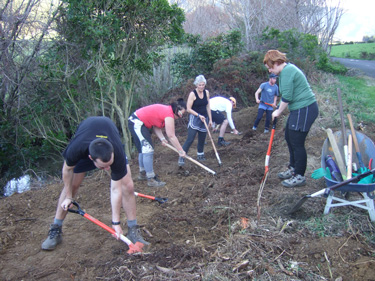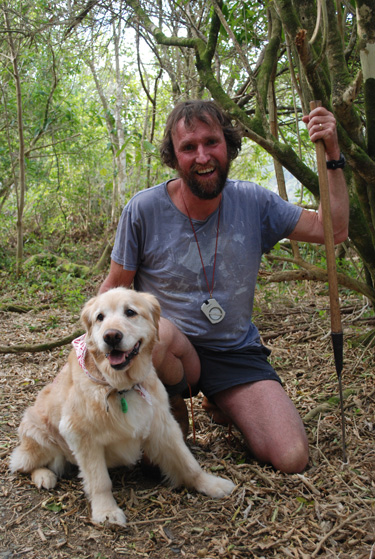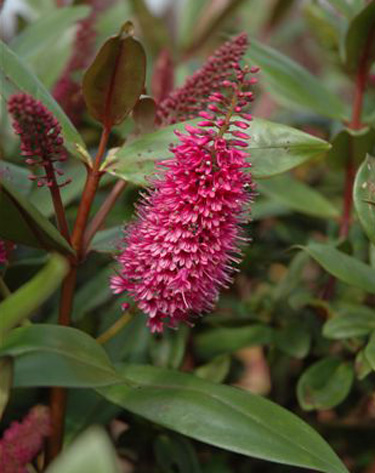Work of Art
Marlborough artist Rick Edmonds is the force behind the Link Pathway project in Marlborough - a functional and very beautiful pathway that is linking communities from Havelock to Picton.
Although the Pathway has a very practical purpose - it will save people walking along busy roads with no footpaths - it has transformed from a simply physical project to one with a major environmental impetus.
“We didn’t set out for the project to have an environmental driver, but that’s what’s happened. Through building of the Pathway, we are now very involved with planting, pest and weed control.
Building the 50 kilometre pathway began a decade ago. Ten kilometres is already open and a further 15km is being cleared, ready for development. Winding its way through public, Department of Conservation (DoC) and Council land, the finish date is expected around 2020; specifically January 15 - the 250th anniversary of James Cook’s arrival in Ship Cove.
“Local communities dotted between the two towns like Anakiwa, Ngakuta and Linkwater have been isolated, only accessible by car. There are also a huge number of holiday makers, retired people and locals who love to walk - Queen Charlotte Track attracts thousands of walkers and our region is known for its trails and tracks. The Link Pathway between Picton and Havelock will join people and places, and create physical and social connections,” explains Rick.
“Each community has ownership of their section of Pathway. They are re-planting the areas with native plants and are looking after the maintenance. On the Linkwater to Anakiwa Pathway the locals have put in seats and signage, planted flax, hebes, pittosporum and manuka and even created a putting green! They have also taken on predator control, resulting in the birds coming back to the land.”
Where gorse and blackberry exist, groups of volunteers clear the weedy vegetation along the proposed path line and also create pockets adjacent to the path to regenerate. Bolstering the volunteer worker are students from the Outward Bound adventure school in Anakiwa, who spend a day a month helping prepare the Pathway for planting.
The question of what to plant along the Pathway is an important part of an agreement Rick has with DoC. “There is an agreement around planting plans and the right types of plants that will flourish in the region. Local nurseries also agree to supply the appropriate seedlings. Although it’s not strictly controlled, it’s something we try to manage as carefully and closely as we can. And it’s never been a problem.”
Robin Dunn is the Reserves/Amenities Officer and Bike Walk Marlborough Co-ordinator at Marlborough District Council. One of eight Link Pathway Trust members, Robin has supported the project from very early on and provides guidance around planting recommendations.
“We need to keep our visitor experience authentic and retain our indigenous flora and local biodiversity. We recommend using seed sourced locally and we are fortunate that many nurseries have this available to gardeners or will grow it to order.
“The Marlborough Sounds is a special area and so very different to the dry and exposed southern Marlborough region. Even within the Sounds there are three distinct ecological areas that differ in features, climate and flora. It is the North Marlborough or ‘Inner Sounds’ area that the Link Pathway sidles through. Although we have preferred species of trees to plant, nature here is very effective at restoring an area after it’s been cleared, and often does not even need planting as native seedlings germinate fast. The greatest assistance to natural restoration is usually weed control, and ensuring exotic weeds do not muscle in and compete with native species.
“It’s wonderful to see many home owners along the Pathway inspired to restore areas on their properties and improve the condition of existing regeneration native vegetation on their properties by carrying out pest control and planting local tall tree species,” he adds.
The aesthetic of the Pathway is of great interest to Rick, who is an accomplished artist, playwright and musician. Recently he was awarded an MNZM (Member of New Zealand Order of Merit) for services to the arts and the community.
“I’m an artist not an engineer and am about creating a thing of beauty - not just something that links places physically. It has to work, but it also has to have the wow factor. I have a real interest in how the Pathway interacts with, and relates to the environment. It’s essentially another work of art in my portfolio. How many artists can say their work is available to view on Google Earth?” he laughs.
Another initiative Rick is currently exploring is the recycling of mussel shells to line the tracks.
“Mussels are an iconic Marlborough Sounds product and there is a thriving mussel industry in Pelorus Sound. But there are mountains of discarded mussel shells that have built up over the past 20 years. We are hoping to use the shells mixed with sand and compacted to line the tracks. We’re just working on finding the best way to grind the shells up so they are flat and you can walk on them with bare feet. The sparkling white shells next to the green vegetation will make an impressive sight.”
“This is a fantastic project that will link towns and the numerous communities along Queen Charlotte and will also provide a scenic and historic ‘Sounds’ walking or cycling experience,” adds Robin. “And who better to build a pathway than an artist?”
Problem species in the Marborough Sounds, several of which are garden ‘escapees’:
- Hedera (ivy)
- Tradescantia
- Convolvulus
- Vinca minor and V. major
- Lonicera japonica (honeysuckle)
- Clematis vitalba (old man’s beard)
- Acacia species (wattle)
- Acer pseudoplatanus (sycamore)
- Crataegus monogyna (hawthorn)
- Asparagus fern
- Palms
- Laurus nobilis (bay tree)
- Robinia psuedoacacia (black locust tree)
Natives to plant instead:
Hebes, Pittosporum species, Kahikatea, Titoki, Ponga, wheki, Rimu, Akeake, Kotukutuku (tree fuchsia), Pigeonwood, Papauma (Griselinia littoralis), Rewarewa, Kanuka , Putaputaweta, Cabbage tree, Karaka.
For more information about the pest plants in your region go to www.weedbusters.org.nz or your local regional council.
9-Sep-2015

Outward Bound students prepare the Pathway for planting

Rick and Jess

Hebe speciosa cultivar


